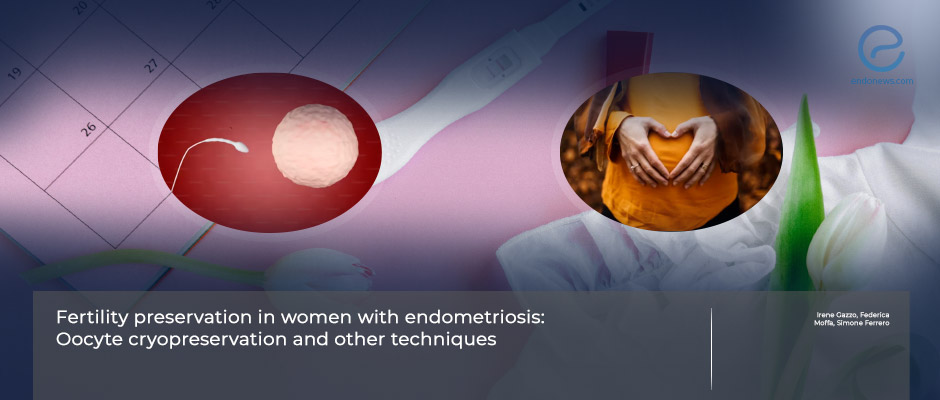The need for fertility preservation in women with endometriosis
Jun 21, 2024
Fertility preservation is particularly suitable for extensive ovarian endometriosis.
Key Points
Importance:
- The recent ESHRE guidelines recommend fertility preservation in cases with extensive ovarian endometriosis.
Highlights:
- Oocyte cryopreservation is the most commonly used technique for fertility preservation in patients with endometriomas compared to ovarian tissue preservation and embryo cryopreservation.
What's done here:
- This article reviews the need for fertility preservation in women with endometriosis and summarizes the recommended techniques in the field.
Basic Outlines:
- The benefit of fertility preservation in women with endometriosis is still a mystery, especially if they never tried to conceive before.
- Advice should be given to women who have large endometriomas, bilateral endometriomas, and previous ovarian surgery.
- Oocyte cryopreservation is the most preferred fertility preservation technique in women affected by endometriosis.
- The ovarian tissue preservation technique is no longer an experimental procedure but is not commonly used due to its need for laparoscopy.
- The embryo cryopreservation technique has its limits, such as choosing a partner.
- The success rate of fertility preservation is based on age, ovarian reserve, and surgical history.
Lay Summary
A variety of pathologies such as adhesions, inflammation, modified pelvic anatomy, and altered ovarian reserve are among the causes of infertility in women with endometriosis. Additionally, these patients experience suboptimal outcomes characterized by reduced pregnancy rates when they undergo assisted reproductive techniques. The molecular level involving dysregulation of steroids, oxidative stress, and angiogenesis within the follicular environment should be responsible for the cause of infertility in this disease. Moreover, removing ovarian endometriomas worsens the ovarian reserve and AMH levels. If the laparoscopic surgery has intervened in both ovaries, premature ovarian failure and menopausal symptoms become prominent six months afterward.
Considering all these issues related to infertility, it is helpful to make a preliminary assessment and plan fertility preservation while the patients are younger. Three techniques are used to preserve infertility: oocyte preservation, embryo cryopreservation, and ovarian tissue preservation.
This paper, recently published in Best Practice & Research Clinical Obstetrics & Gynecology, Gazzo et al., from the University of Genova, Italy, discussed the three fertility preservation techniques for young women with ovarian endometriomas. One recent study showed routine fertility counseling for all endometriosis patients is applied as a standard practice in almost one-third of European clinics involving 58 fertility centers/clinics. Drugs and methods of controlled ovarian stimulation before fertility preservation are controversial. Stopping hormonal therapy months before and starting ovarian stimulation with GnRH antagonists can reduce the size of endometriomas and improve the quality and number of collected oocytes. The oocyst pick-up procedure before the surgery is rational but could impact the surgeon's success rate by causing adhesions. Applying antibiotic therapy during oocyte retrieval can prevent the formation of ovarian abscesses.
Counseling fertility preservation with endometriosis patients is important for their reproductive life, even though the success rate depends on the age, size, and location of the endometriomas and previous ovarian surgery.
Research Source: https://pubmed.ncbi.nlm.nih.gov/38777734/
oocyte cryopreservation fertility preservation embryo cryopreservation ovarian tissue preservation AMH levels infertility pregnancy rate endometriosis.

